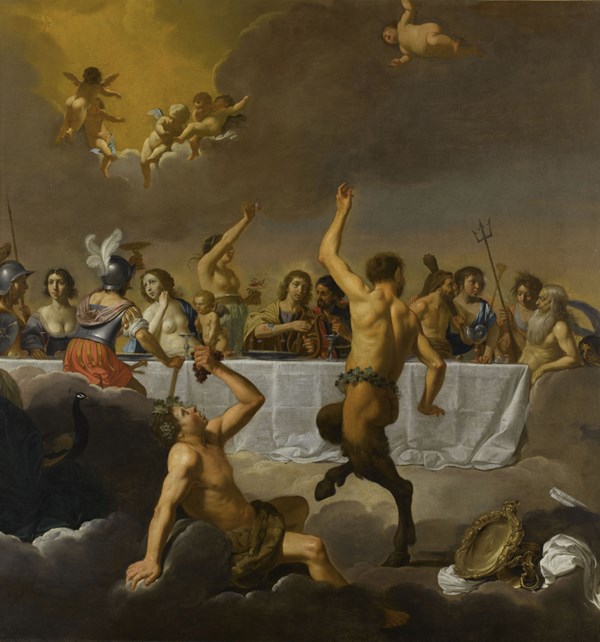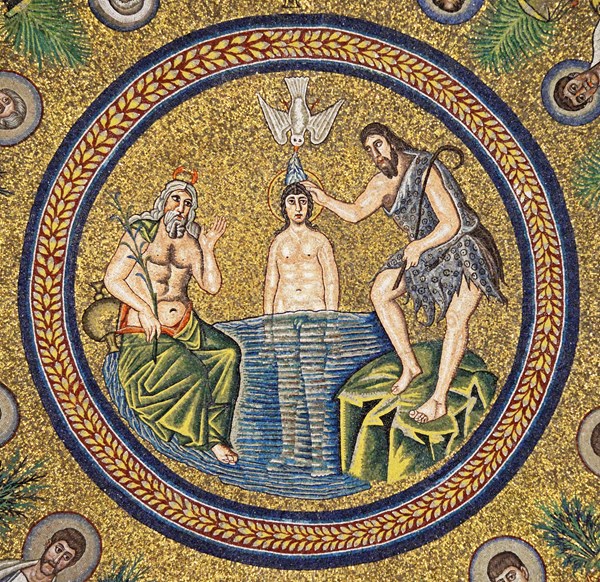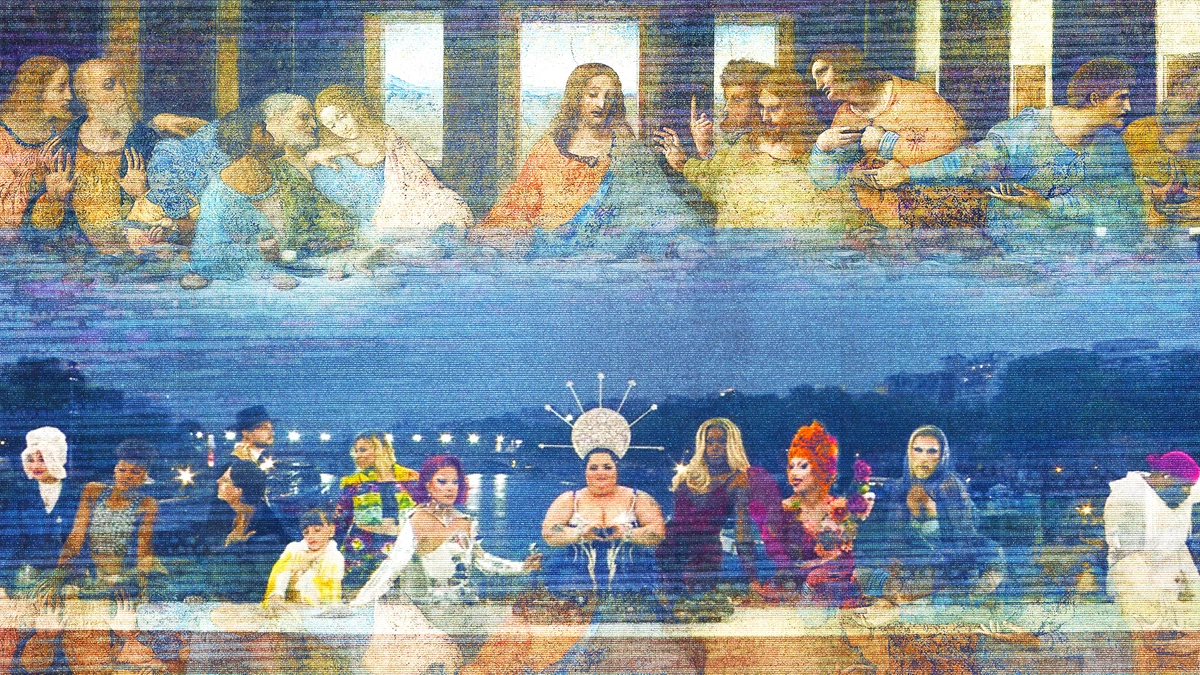The Paris Olympics’ Altar to an Unknown God
The controversy over the Paris Olympics’ alleged mockery of Leonardo da Vinci’s The Last Supper during the opening ceremony takes us all the way back to ancient Greece. Not to Olympia, the site of the original Games, but to Athens, as documented by the evangelist Luke in Acts 17. Then, as now, Christians had to navigate a tragic misunderstanding of the Good News, and the apostle Paul’s patience with the foolishness of the Greeks (1 Cor. 1:23) just might come in handy as we watch the 2024 Games.
For many years, I assumed that Paul must have commended the religiosity of the superstitious Athenians with his tongue firmly in his cheek. But the longer I spend with this story, the more I believe my initial reading to be wrong. Just read verses 22 and 23:
Paul then stood up in the meeting of the Areopagus and said: “People of Athens! I see that in every way you are very religious. For as I walked around and looked carefully at your objects of worship, I even found an altar with this inscription: To An Unknown God. So you are ignorant of the very thing you worship—and this is what I am going to proclaim to you.”
There’s no sarcasm here. Paul seems genuine in his praise. Despite the fact that the city’s numerous idols “greatly distressed” him (v. 16), he found something to admire and used the Athenians’ extreme superstition as an opening for the gospel. Could we try the same with Paris?
But, first, I must concede that the artistic choices made with this tableau are undeniably awkward, seriously shortsighted about audience reception, and distasteful at best. I understand why many Christians were offended—though I must also note that evidence for what was intended is inconclusive. Scholars disagree on whether this was a deliberate parody or unwitting allusion, and it’s unlikely that the offended will get a satisfying apology or the confused a concrete answer.
So where do we go from here? This sort of thing has happened before, and it’ll happen again. Do we have an option other than being angry or turning a blind eye? Is it possible to reflect on this in a more helpful way, and perhaps even to imitate Paul and advance the gospel?
A good place to begin is to ask, “Why might the creators of this spectacle have wanted to borrow Christ’s table in the first place?” This is not an unusual move in the art world, which has no shortage of references to classic images like Da Vinci’s. Contemporary artists allude to and appropriate Christian imagery all the time. From an art history perspective, the reference itself isn’t all that novel or significant—what matters is the meaning it’s given.
For instance, Andres Serrano’s 1987 photograph, Piss Christ, offers almost no nuance, which is why it continues to generate outrage among Christians. By contrast, Andy Warhol made an extensive series of paintings based on Da Vinci’s Last Supper at the end of his life. Those works continue to receive thoughtful engagement, including from Christians, that is changing the way scholars think about Warhol’s spirituality.

Image: WikiMedia Commons / WikiArt
‘Piss Christ’ by Serrano Andres (left) and The Last Supper by Andy Warhol (right)
Determining whether such references are intentionally offensive or simply inside baseball for art school grads—or a new incarnation of the confused longing of the Athenians—is often a tough call. That’s exactly what’s disputed with the banquet imagery from the opening ceremony in Paris. Were the organizers honoring the original—Da Vinci’s masterpiece and/or Dutch artist Jan van Bijlert’s 17th-century The Feast of the Gods—by seeking to add to its meaning, or were they demeaning or redefining it?

Image: WikiMedia Commons
Feast of the Gods by Jan van Bijlert
I believe the answer comes down to whether we believe the possible Last Supper reference pictured Christ and the disciples in a wildly inappropriate or out-of-character way. Superficially, the answer may seem to be an easy yes: The disciples were replaced with drag queens, and in place of the Lord’s Supper on the table was a nearly nude man, painted blue.
But part of the reason it’s so hard to shake the connection to Da Vinci, despite the Olympics’ insistence that the only intended reference was Greek mythology, is that the performance in Paris seems to be pressing the question of who belongs at that special table. And we must remember that Jesus himself pressed this issue again and again in his ministry by dining with “sinners and tax collectors” (Mark 2:15–17). Disturbing the established codes for table fellowship got Jesus in plenty of trouble, and—off-putting though it was for many viewers—this performance may have been an attempt to do the same.
Looking beyond Paris, though, Christians may want to rethink our possessive instincts around Christian imagery. I get it. As an art history professor at a Christian college, I routinely find myself getting grumpy about sloppy appropriations of “our” stuff. I could make a long list of recent examples from movies and television that got me worked up.
Yet it’s helpful to recall two things that may temper this reaction. First, our ancient Christian brothers and sisters were often at a loss for how to both reject idols but also depict their faith, so they regularly appropriated ready-to-hand visual cultures of their Greco-Roman neighbors. Take a look at the central scene in the ceiling mosaic of the Arian Baptistry in Ravenna, Italy. Is that a river god present at Jesus’ baptism?

Image: Ввласенко / WikiMedia Commons
Baptism of Christ, a mosaic in Arian Baptistry
Or compare the many depictions of Jonah under his vine (for example, the British Museum’s Jonah sarcophagus) to portrayals from the ancient world of Dionysus or Endymion, reclining under dangling vines. Artists borrow from each other, whether they’re Christians or not, and early Christian use of pagan imagery provided visual camouflage to survive the most severe seasons of Roman persecution. With time, that practice of subverting familiar forms gave way to creating wholly new ones. (Recall that Christians didn’t depict Christ on the cross for eight centuries after his resurrection.)
This is part of why it’s difficult to settle the reference question in Paris: The Feast of the Gods looks a lot like The Last Supper, so even if the Olympics only had Van Bijlert’s painting in mind, as claimed, the tableau would still look like Da Vinci’s painting. These works have shared sources, and one generation’s art inevitably informs another. We can’t accept that kind of cross-pollination when it works for us and complain when it doesn’t.
Whether we like it or not, masterpieces like Da Vinci’s, created by and for the church, are part of a shared cultural heritage that will continue to inspire successive generations of artists, generating lots of hits and plenty of misses. Would we really prefer it otherwise? Perhaps we can learn to marvel at the staying power of these images in a secularizing world.
And that brings me to the second reason we should resist knee-jerk condemnation: Why do these images still resonate? Why did the organizers of one of the few truly global events of modern life choose this image?
I believe the decision says a great deal about the spiritual needs of our time. In his response to the media after the backlash, the artistic director described the scene as a picture of inclusion. He could have chosen many different ways to express that value, but he chose an image that, for good or ill, brings to mind Jesus dining with his betrayer and instituting a meal by which all believers remember him.
Are we really disappointed by that choice? Or could we see here a clumsy grasping for truth amid desperation, loneliness, and unconscious longing for God—a grasping that deserves our compassion? Could we, like Paul in Acts 17:27, hope that this tableau’s organizers and fans “would seek [God] and perhaps reach out for him and find him, though he is not far from any one of us”?
Jesus himself was mischaracterized by his friends and enemies alike. He showed immense patience with the confusion that followed him wherever he went, responding not with outrage or indifference but with probing questions, well-timed calls to repentance, and announcements of the gospel. Even stern ol’ Paul, disturbed by the gross idols around him, found a way to redirect a confused people to God.
Taylor Worley is visiting associate professor of art history at Wheaton College and author of Memento Mori in Contemporary Art: Theologies of Lament and Hope.


